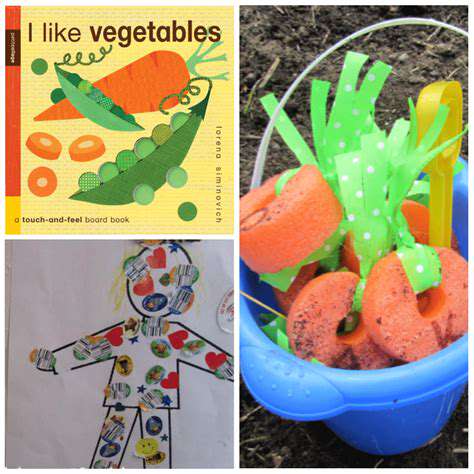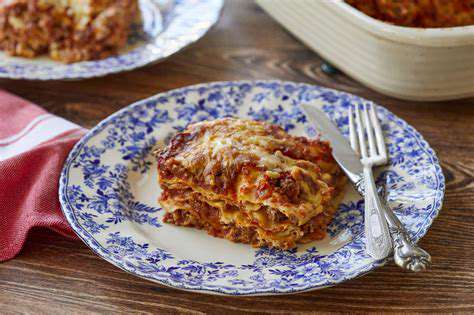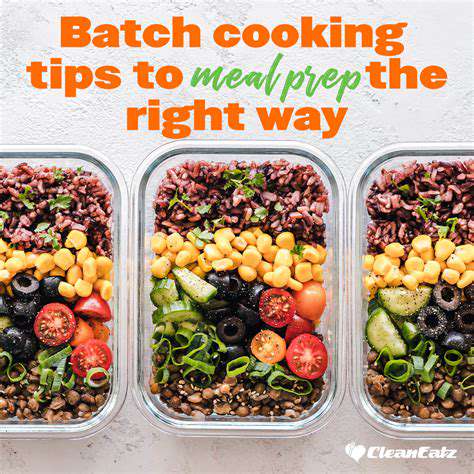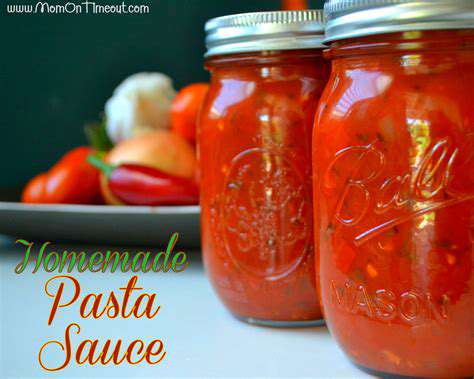Baby Led Weaning Recipe Ideas
Introducing Soft Textures
Babies need to explore various tastes and textures as they begin their food journey. Start with smooth purees of fruits and vegetables, then slowly introduce slightly thicker consistencies. This gradual approach helps little ones develop crucial chewing and swallowing skills while discovering new flavors. Presenting different colored foods makes mealtime more engaging and educational.
Every child progresses at their own speed when adapting to new textures. Some may need more time than others - that's completely normal. Keep offering diverse options without pressure, making meals positive and stress-free. The goal is creating happy associations with food that will last a lifetime.
Finger Foods for Easy Grasping
When babies start showing interest in self-feeding, offer soft, graspable foods. Perfect options include steamed fruit slices (like peaches or pears), roasted sweet potato cubes, or cooked carrot sticks. These nutritious choices encourage independence while supporting baby-led weaning principles. Watch how your child handles different shapes and adjust sizes accordingly.
Small, chubby-handled utensils can help transition to self-feeding. Always stay nearby during meals to ensure safety. The key is balancing independence with appropriate supervision as little ones develop their eating skills.
Important Considerations for Safety
Safety comes first when introducing finger foods. Always cut food into baby-appropriate sizes and never leave children unattended while eating. Avoid hard, sticky, or round foods that could pose choking risks. The right food size depends on your baby's current chewing abilities - when in doubt, err on the side of smaller pieces.
Create a safe eating environment by removing potential hazards from the dining area. This allows babies to focus on exploring flavors and textures without unnecessary risks.
Variety of Nutrient-Rich Options
Offer diverse, wholesome finger foods to support balanced nutrition. Great choices include steamed broccoli florets, soft cauliflower pieces, or cooked squash cubes. For protein, try finely shredded chicken or flaked fish (ensuring all bones are removed). Whole grains like well-cooked quinoa or small pasta shapes provide lasting energy. Always consult your pediatrician about introducing new foods.
Proper cooking is essential - make sure all foods reach safe internal temperatures to prevent foodborne illness while maintaining appropriate softness for little mouths.
Introducing Flavorful Fruits
Naturally sweet fruits make excellent early foods. Start with mashed banana, avocado slices, or soft berry pieces. These provide vitamins and antioxidants while introducing pleasant flavors. Always cut fruits into manageable sizes and watch for any allergic reactions when trying new options.
Presenting fruits in different colors and forms helps expand your baby's palate. Rotate varieties regularly to provide diverse nutrients and keep mealtime interesting.
Building Healthy Habits
Baby-led weaning fosters more than just eating skills - it establishes lifelong food attitudes. Create consistent meal routines in a calm, pleasant atmosphere. Allow messy exploration without distractions. Some meals will go better than others - that's perfectly normal in this learning process.
The focus should be on positive experiences rather than perfect consumption. With patience and encouragement, you'll help build a foundation for healthy eating habits that will benefit your child for years to come.
Fruit and Veggie Fun for Little Explorers

Encouraging Healthy Habits
Introducing produce to children establishes nutritional foundations that impact their entire lives. Early exposure to diverse flavors significantly reduces picky eating tendencies later. Colorful fruits and vegetables provide essential nutrients while sparking curiosity about new foods.
Creative presentations transform healthy foods into appealing choices. Try fruit flower arrangements on oatmeal or vegetable boats with tasty dips. Making nutrition fun increases the likelihood children will embrace wholesome eating habits naturally.
Fun and Engaging Activities
Transform meals into interactive learning experiences. Involve children in washing produce or stirring ingredients - these simple tasks build food familiarity. Storytelling about superpower vegetables or magic fruit makes healthy eating an adventure.
Colorful plates and fun-shaped utensils add visual appeal. Consider themed meals where different colored foods represent parts of a story or game. These techniques help children associate produce with positive experiences rather than obligation.
Creative Recipe Ideas
Blend nutrition with creativity through simple recipes. Fruit and veggie smoothies in fun cups make great snacks. Skewers with alternating fruit and cheese cubes create edible rainbows kids love. Let children assemble their own mini-pizzas with veggie toppings for hands-on fun.
Dips transform plain vegetables into exciting snacks. Try yogurt-based dressings or hummus in colorful containers. When children participate in food preparation, they become more invested in tasting their creations.
Protein Powerhouses: Meat, Fish, and Eggs
Lean Protein for Tiny Tummies
Introducing proteins provides essential nutrients for growing bodies. Choose tender, well-cooked meats like shredded chicken or flaked fish. Salmon offers valuable omega-3s for brain development when prepared safely. Always supervise protein meals closely.
Start with small portions of thoroughly cooked proteins cut into baby-friendly pieces. The texture should mash easily between gums or new teeth. Gradually increase variety as chewing skills improve.
Eggcellent Choices for Development
Eggs deliver high-quality nutrition in versatile forms. Soft scrambled or hard-boiled eggs (finely chopped) make excellent protein sources. Always cook eggs completely and watch for allergic reactions when first introducing them.
Variety is Key: Introducing Different Types of Meat
Rotate protein sources to provide diverse nutrients. Try lean beef, turkey, or pork in appropriate textures. Different fish varieties offer unique nutritional benefits - aim for two servings weekly. This variety helps develop a broad palate while ensuring balanced nutrition.
Safety First: Preparing Proteins for Baby-Led Weaning
Food safety is non-negotiable with proteins. Use separate utensils for raw and cooked foods, and always verify internal temperatures. Cool foods adequately before serving to prevent burns. Never leave babies unattended with protein foods.
Introducing Protein Smoothly: Timing and Portion Sizes
Begin with tiny portions of single proteins, watching for reactions. Mix small amounts into familiar foods at first to ease acceptance. Gradually increase variety and quantity as your baby shows readiness. Consult your pediatrician about any concerns.
Grains and Legumes: Building a Solid Foundation

Grains: The Foundation of Many Diets
Grains sustain civilizations by providing essential energy and nutrients. Whole grains offer superior nutrition with their intact fiber and vitamins. From oatmeal to quinoa, grain variety ensures diverse nutrients in baby's diet.
Properly cooked grains make ideal first foods - think soft rice or well-cooked pasta. Their mild flavors and adaptable textures help transition to more complex foods. Always ensure grains are sufficiently soft for safe chewing.
Legumes: A Protein-Packed Powerhouse
Beans and lentils deliver plant-based nutrition in economical, sustainable forms. Their combination of protein and fiber supports healthy growth and digestion. Well-cooked, mashed legumes mix beautifully with grains and vegetables.
Start with mild-flavored lentils or black beans, thoroughly cooked and mashed. Gradually introduce more varieties as your baby accepts them. The soluble fiber in legumes promotes gut health while providing lasting energy.
Legumes offer impressive nutritional value - protein for growth, iron for development, and fiber for digestion. Their versatility allows creative incorporation into many baby-friendly dishes.
Read more about Baby Led Weaning Recipe Ideas
Hot Recommendations
- Traditional Foods for Day of the Dead
- Food Etiquette in Italy: Pasta Rules!
- Best Family Friendly Restaurants with Play Areas in [City]
- Review: The Best [Specific Dessert] Place in [City]
- Top Ice Cream Parlors in [City]
- Traditional Foods for Halloween
- The History of the Potato in Ireland
- Best Vegan Pizza Joints in [City] [2025]
- Best Bakeries for Sourdough Bread in [City]
- Food Culture in Argentina: Asado and Wine

![First Baby Food Recipes [Purees & Introducing Solids]](/static/images/28/2025-04/SafetyConsiderationsforBabyFoodPreparation.jpg)





![Best Mexican Restaurants in [City]](/static/images/28/2025-05/FineDiningMeetsMexicanFlair3AAnElevatedCulinaryExperience.jpg)

![Best Vegetarian Restaurants in [City]](/static/images/28/2025-05/LocalFavoritesandHiddenGems.jpg)
